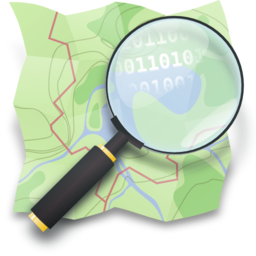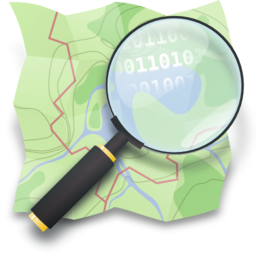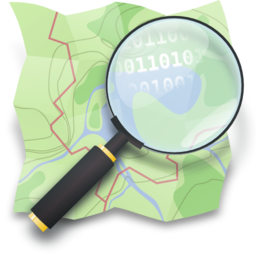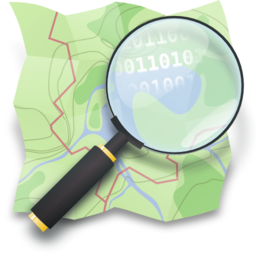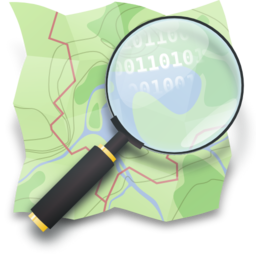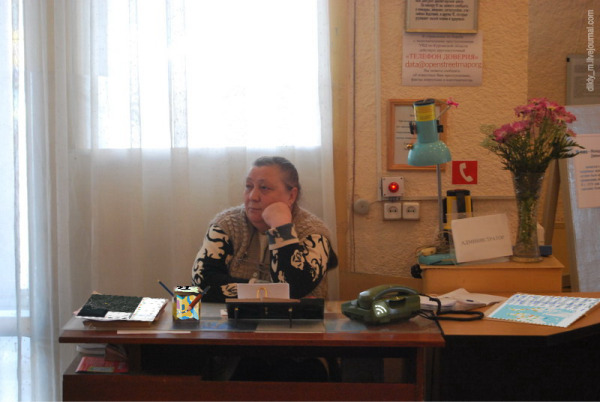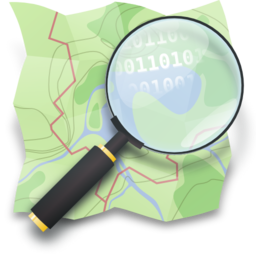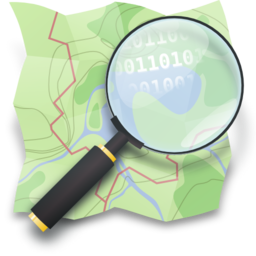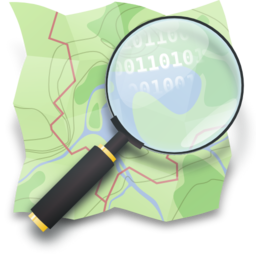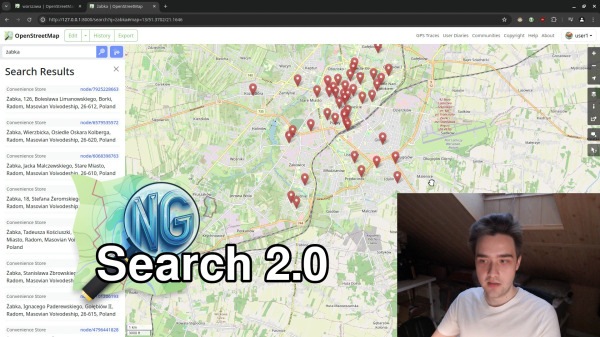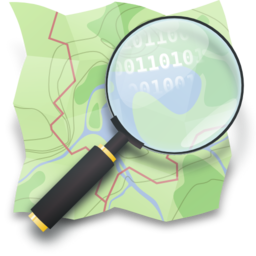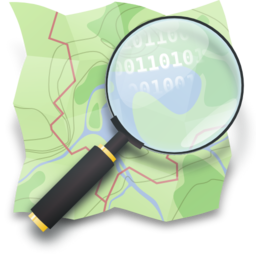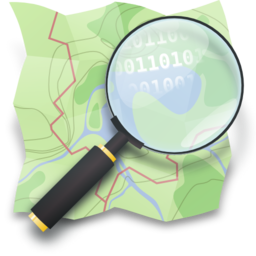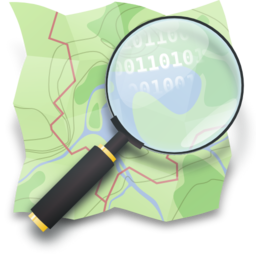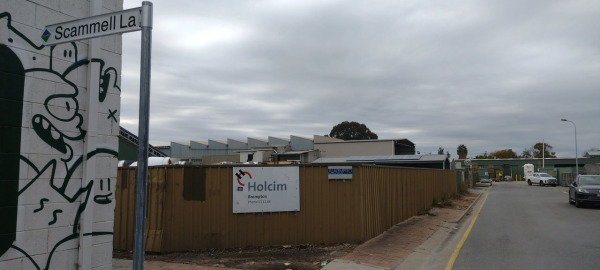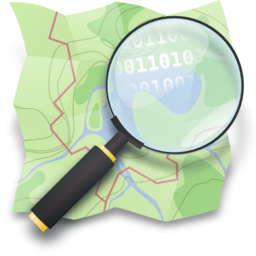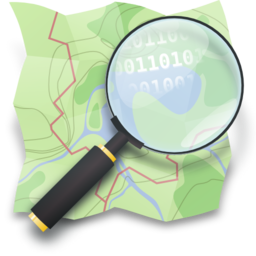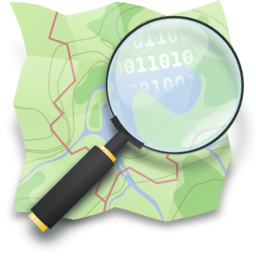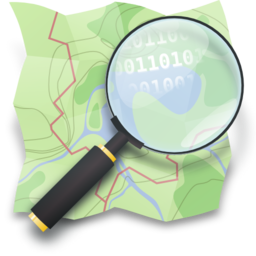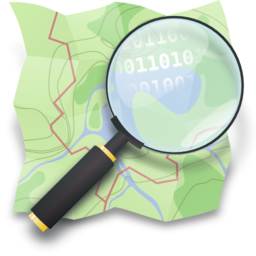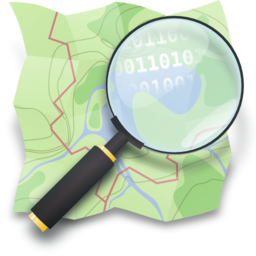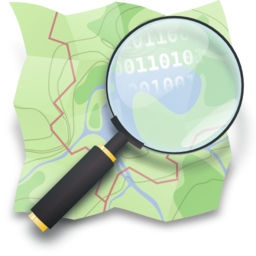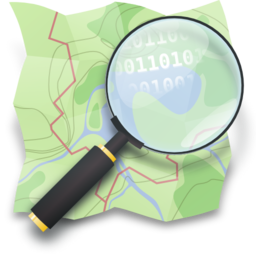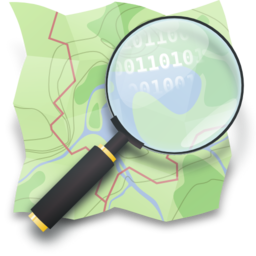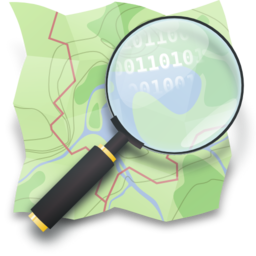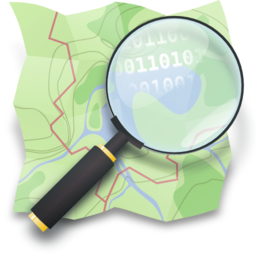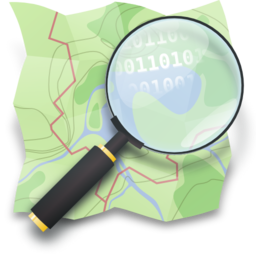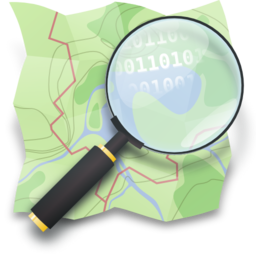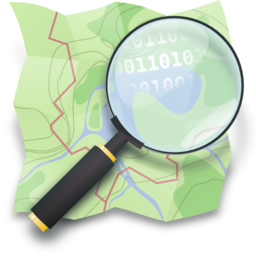OpenStreetMap is a map of the world, created by people like you and free to use under an open license.
OpenStreetMap is a map of the world, created by people like you and free to use under an open license.
OpenStreetMap is a map of the world, created by people like you and free to use under an open license.
Today, I want to look back on my time with OpenStreetMap (OSM) and how the OSM Guru Fellowship has helped me grow.
I started contributing to OSM in 2019. Since then, I’ve made over 2000 changesets. Each one has helped make the map a bit better and more accurate.
Working with Jungle Bus and GeoMinds has been great. These projects showed me how important good maps are, especially in places that need them most. I’m proud to have been a part of their work.
One of my biggest projects was mapping public transportation in Kochi. We added 24,000 kilometers of routes to OSM. It was a huge task, but knowing it helps people get around the city makes it all worth it.
The OSM Guru Fellowship has been amazing. It taught me a lot about OSM and its concepts, giving me the skills I needed to be a better mapper. I learned that knowledge is power, but community is even more powerful.
The OSM community is something I love being part of. It’s inspiring to see people from all over the world work together to map the world. The fellowship connected me with others who are just as passionate about mapping as I am.
Looking back, I’m thankful for everything I’ve learned and the people I’ve met. The OSM Guru Fellowship has been a big part of my journey, and I’m excited for what comes next. Here’s to more mapping and a stronger community!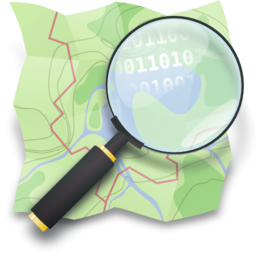
I started contributing to OSM in 2019. Since then, I’ve made over 2000 changesets. Each one has helped make the map a bit better and more accurate.
Working with Jungle Bus and GeoMinds has been great. These projects showed me how important good maps are, especially in places that need them most. I’m proud to have been a part of their work.
One of my biggest projects was mapping public transportation in Kochi. We added 24,000 kilometers of routes to OSM. It was a huge task, but knowing it helps people get around the city makes it all worth it.
The OSM Guru Fellowship has been amazing. It taught me a lot about OSM and its concepts, giving me the skills I needed to be a better mapper. I learned that knowledge is power, but community is even more powerful.
The OSM community is something I love being part of. It’s inspiring to see people from all over the world work together to map the world. The fellowship connected me with others who are just as passionate about mapping as I am.
Looking back, I’m thankful for everything I’ve learned and the people I’ve met. The OSM Guru Fellowship has been a big part of my journey, and I’m excited for what comes next. Here’s to more mapping and a stronger community!

jothishbabu's Diary | My OSM Guru Fellowship Journey
OpenStreetMap is a map of the world, created by people like you and free to use under an open license.OpenStreetMap
Kinnakorai is a beautiful village about 50 km from Ooty town. The beauty lies in the journey to the village itself. Kinnakorai is similar to any other remote mountain village in India, but the villagers looked at us like we came from Krypton on a UFO. I can’t blame them at all because we were in full gear with 25 people on different motorcycles.
By the way, the day I realized that the road to the village was incorrect, I had the complete GPX trace along the route. So, I planned to fix the roads, and here we are. I edited the roads with my GPX traces and pushed the updates to OSM. Now anyone can rely on those maps. :)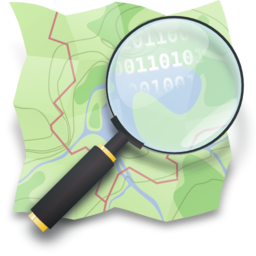
By the way, the day I realized that the road to the village was incorrect, I had the complete GPX trace along the route. So, I planned to fix the roads, and here we are. I edited the roads with my GPX traces and pushed the updates to OSM. Now anyone can rely on those maps. :)

jothishbabu's Diary | Road trip to kinnakorai..
OpenStreetMap is a map of the world, created by people like you and free to use under an open license.OpenStreetMap
OpenStreetMap is a map of the world, created by people like you and free to use under an open license.
OpenStreetMap is a map of the world, created by people like you and free to use under an open license.
OpenStreetMap is a map of the world, created by people like you and free to use under an open license.
I started my journey as an OSM contributor in August 2018. My knowledge was initially limited to the iD editor and HOT tasking manager platform, with minimal community mapathon contributions within Nigeria. Consequently, my contributions to OSM were very low and inconsistent.
In November 2023, while seeking more opportunities to volunteer and contribute to the growing OpenStreetMap community, I discovered the OM Guru fellowship organized by the Open Mapping Hub Asia-Pacific. I applied as a Mapper, which complemented my background as a Remote Sensing and GIS student.
During my six-month tenure in the fellowship, I was exposed to various aspects of mapping, from building data capturing using JOSM, to Amenities/POI mapping with Every Door, and street-level imagery capturing using Mapillary, focusing on Disaster, Humanitarian, and Climate action. Additionally, I learned and developed my skills in JOSM validation and field mapping. The weekly training sessions and webinars exposed me to more applications of GIS and Remote Sensing in open spatial data science, thus enhancing my geospatial expertise.
One significant highlight of the fellowship was the Climate Change Challenge, where OM Guru-led groups competed in 8 climate challenges. I led a team of OSM contributors, which provided me with valuable leadership and teamwork experience. I was exposed to more applications and tools within the OSM ecosystem, such as Mapswipe, Maproullete, and mapping with RapidID. I contributed to mapping high priority, disaster prone and impacted areas in Asia-pacific countries.
The OM Guru fellowship came to me at the right time, and I was fortunate to utilize this opportunity. It transformed my OSM experience and provided me with the skills and expertise needed henceforth within the OSM community and beyond. The last 6 months have been incredibly enriching, filled with knowledge and skill development. It was the best period of my OSM contributions. Moving forward, I am confident in my ability to lead mapping activities and motivated to continue contributing to OSM in general. Thank you, Open Mapping Hub Asia-Pacific, for the opportunity!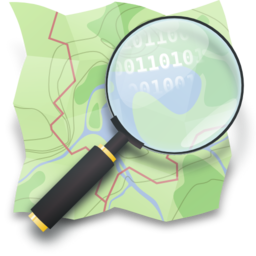
In November 2023, while seeking more opportunities to volunteer and contribute to the growing OpenStreetMap community, I discovered the OM Guru fellowship organized by the Open Mapping Hub Asia-Pacific. I applied as a Mapper, which complemented my background as a Remote Sensing and GIS student.
During my six-month tenure in the fellowship, I was exposed to various aspects of mapping, from building data capturing using JOSM, to Amenities/POI mapping with Every Door, and street-level imagery capturing using Mapillary, focusing on Disaster, Humanitarian, and Climate action. Additionally, I learned and developed my skills in JOSM validation and field mapping. The weekly training sessions and webinars exposed me to more applications of GIS and Remote Sensing in open spatial data science, thus enhancing my geospatial expertise.
One significant highlight of the fellowship was the Climate Change Challenge, where OM Guru-led groups competed in 8 climate challenges. I led a team of OSM contributors, which provided me with valuable leadership and teamwork experience. I was exposed to more applications and tools within the OSM ecosystem, such as Mapswipe, Maproullete, and mapping with RapidID. I contributed to mapping high priority, disaster prone and impacted areas in Asia-pacific countries.
The OM Guru fellowship came to me at the right time, and I was fortunate to utilize this opportunity. It transformed my OSM experience and provided me with the skills and expertise needed henceforth within the OSM community and beyond. The last 6 months have been incredibly enriching, filled with knowledge and skill development. It was the best period of my OSM contributions. Moving forward, I am confident in my ability to lead mapping activities and motivated to continue contributing to OSM in general. Thank you, Open Mapping Hub Asia-Pacific, for the opportunity!

demoore19's Diary | My OSM journey and OM Guru Fellowship experience
OpenStreetMap is a map of the world, created by people like you and free to use under an open license.OpenStreetMap
I can’t save the changes. It shows error instead
OpenStreetMap is a map of the world, created by people like you and free to use under an open license.
OpenStreetMap is a map of the world, created by people like you and free to use under an open license.
OpenStreetMap is a map of the world, created by people like you and free to use under an open license.
OpenStreetMap is a map of the world, created by people like you and free to use under an open license.
OpenStreetMap is a map of the world, created by people like you and free to use under an open license.
OpenStreetMap is a map of the world, created by people like you and free to use under an open license.
OpenStreetMap is a map of the world, created by people like you and free to use under an open license.
At the moment I’m only doing small edits, or edits using StreetComplete. I got frustrated by some people making bad edits which persuaded me there were other things that I could do rather than editing OSM.
Particularly annoying behaviours for me:- * Dunning-Kruger edits by people who have been here for a while but don’t edit that often - people who are absolutely sure they are right even when queried, especially people whose changeset edits read like they are selling houses * people deliberately setting data they know is wrong but to make some route planner or map do what they want, even though they have been challenged on this repeatedly in the past * people adding data like access, surface, or tracktype in bulk to tracks that lack them just to fill in missing data without any evidence (so all tracks in a particular area get set to tracktype=grade2 whether they are actually asphalt or mud) * people copying from developers plans, rights of way descriptions, or other maps at the expense of reality (I map what’s there on the ground, they “correct” it because they’ve seen it on a plan, my journey planner tries to send me on unbuilt paths, through fences where I don’t have access, or my road bike on a dirt track suitable for a 4x4 off-road vehicle, and repeat over several years)
My main goal with editing OSM is to improve route planning on foot, bicycle, or public transport, hence why I’m keen to get surface, tracktype, smoothness, access, and construction tags correct.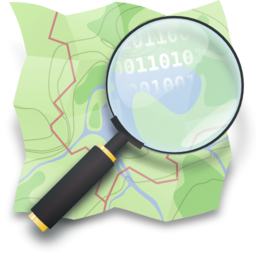
Particularly annoying behaviours for me:- * Dunning-Kruger edits by people who have been here for a while but don’t edit that often - people who are absolutely sure they are right even when queried, especially people whose changeset edits read like they are selling houses * people deliberately setting data they know is wrong but to make some route planner or map do what they want, even though they have been challenged on this repeatedly in the past * people adding data like access, surface, or tracktype in bulk to tracks that lack them just to fill in missing data without any evidence (so all tracks in a particular area get set to tracktype=grade2 whether they are actually asphalt or mud) * people copying from developers plans, rights of way descriptions, or other maps at the expense of reality (I map what’s there on the ground, they “correct” it because they’ve seen it on a plan, my journey planner tries to send me on unbuilt paths, through fences where I don’t have access, or my road bike on a dirt track suitable for a 4x4 off-road vehicle, and repeat over several years)
My main goal with editing OSM is to improve route planning on foot, bicycle, or public transport, hence why I’m keen to get surface, tracktype, smoothness, access, and construction tags correct.

jpennycook's Diary | taking another break from OSM
OpenStreetMap is a map of the world, created by people like you and free to use under an open license.OpenStreetMap
OpenStreetMap is a map of the world, created by people like you and free to use under an open license.
OpenStreetMap is a map of the world, created by people like you and free to use under an open license.
OpenStreetMap is a map of the world, created by people like you and free to use under an open license.
asdasd
OpenStreetMap is a map of the world, created by people like you and free to use under an open license.
OpenStreetMap is a map of the world, created by people like you and free to use under an open license.
OpenStreetMap is a map of the world, created by people like you and free to use under an open license.
Walked into town and along seafront down to Lancaster Gardens.
OpenStreetMap is a map of the world, created by people like you and free to use under an open license.
OpenStreetMap is a map of the world, created by people like you and free to use under an open license.
OpenStreetMap is a map of the world, created by people like you and free to use under an open license.
The Creative Commons Zero (CC0) waiver is, in my opinion, the most free way to release open-source software. Unlike licenses that impose conditions on the use, modification, or distribution of software, CC0 allows me to waive all my rights to limit what users can do with the software. It effectively places the work in the public domain. This absolute waiver ensures that the software can be freely used by anyone, for any purpose, in any way. Here’s why I choose CC0 when releasing open source software and why I cannot – and will not – grant permission to use my CC0 software.
Other licenses impose various requirements on using software, such as:
That means:
In some countries, you either cannot legally put software in the public domain, or “it’s complicated,” due to legal concepts that, as an American, I cannot even begin to comprehend. This can complicate or even prevent the dedication of software to the public domain. To address these legal complexities, CC0 attempts to waive as many rights as possible, providing the most free fallback license for jurisdictions where a public domain waiver is not recognized.
It is reasonable that open-source contributors want credit or attribution for their contributions, either for their résumés and career advancement, or simply out of pride. However, the desire for credit should not overshadow the potential benefits of contributing to the common good. For CC0-waivered software, credit is not a mandatory requirement, which can sometimes be perceived as a drawback. But this very aspect also eliminates any barriers for the adoption and use of the software, ensuring that the work can be freely incorporated into other projects without the need for complicated legal considerations.
By waiving all rights, authors of CC0-waivered software make a clear statement: they are contributing their work for the common good, with no expectation of control or credit. This selfless act can set and example to others to contribute similarly, fostering a culture of sharing and collaboration that benefits everyone.
CC0-waivered software prioritizes influence over notability. By allowing unrestricted use and distribution, the software has the potential to reach a wider audience and be utilized in more diverse and creative ways. This broad adoption can lead to greater impact and technological progress, ultimately benefiting the community as a whole. While individual authors might forgo personal recognition, the influence of their work can be far-reaching.
While CC0 grants complete freedom to anyone to use my software without seeking permission, my choice to not explicitly grant permission is to emphasize the point of choosing CC0 in the first place:
By releasing my software under the CC0 waiver, I have released all my rights to the work, including the right to grant or withhold permission for its use. This is not a matter of choice or preference; it is a fundamental aspect of the CC0 waiver. The CC0 waiver is irrevocable, meaning that the freedom it provides to users cannot be undone or restricted by the original author. Therefore, I cannot grant permission because I no longer possess the legal authority to do so.
True software freedom means giving up control, and CC0 allows me to do just that.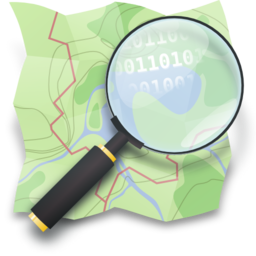
Software freedom
Other licenses impose various requirements on using software, such as:
- Copyleft/viral licensing: Mandates that derivative works also be open-source and follow the same licensing conditions.
- Attribution requirements: Requires giving credit to the original authors in all copies or substantial portions of the software.
- Redistribution conditions: Imposes specific terms on how the software can be redistributed, including the requirement to state changes made to the code.
- Source code disclosure: Requires making the source code available to anyone who receives a copy of the software.
- License compatibility issues: Restrictions that affect the ability to combine the licensed software with other code under different licenses.
- Imposes no obligations for attribution.
- Requires no disclosure of source code.
- Does not mandate any specific licensing for derivative works.
- Places no restrictions on combining CC0-waivered software with other code.
That means:
- Hobbyists can use it.
- Companies that make money can use it.
- People I don’t like can use it.
The closest thing to worldwide public domain
In some countries, you either cannot legally put software in the public domain, or “it’s complicated,” due to legal concepts that, as an American, I cannot even begin to comprehend. This can complicate or even prevent the dedication of software to the public domain. To address these legal complexities, CC0 attempts to waive as many rights as possible, providing the most free fallback license for jurisdictions where a public domain waiver is not recognized.
Credit
It is reasonable that open-source contributors want credit or attribution for their contributions, either for their résumés and career advancement, or simply out of pride. However, the desire for credit should not overshadow the potential benefits of contributing to the common good. For CC0-waivered software, credit is not a mandatory requirement, which can sometimes be perceived as a drawback. But this very aspect also eliminates any barriers for the adoption and use of the software, ensuring that the work can be freely incorporated into other projects without the need for complicated legal considerations.
By waiving all rights, authors of CC0-waivered software make a clear statement: they are contributing their work for the common good, with no expectation of control or credit. This selfless act can set and example to others to contribute similarly, fostering a culture of sharing and collaboration that benefits everyone.
CC0-waivered software prioritizes influence over notability. By allowing unrestricted use and distribution, the software has the potential to reach a wider audience and be utilized in more diverse and creative ways. This broad adoption can lead to greater impact and technological progress, ultimately benefiting the community as a whole. While individual authors might forgo personal recognition, the influence of their work can be far-reaching.
Why I cannot grant permission to use my CC0 software
While CC0 grants complete freedom to anyone to use my software without seeking permission, my choice to not explicitly grant permission is to emphasize the point of choosing CC0 in the first place:
By releasing my software under the CC0 waiver, I have released all my rights to the work, including the right to grant or withhold permission for its use. This is not a matter of choice or preference; it is a fundamental aspect of the CC0 waiver. The CC0 waiver is irrevocable, meaning that the freedom it provides to users cannot be undone or restricted by the original author. Therefore, I cannot grant permission because I no longer possess the legal authority to do so.
True software freedom means giving up control, and CC0 allows me to do just that.

ZeLonewolf's Diary | I won't grant permission to use my CC0 software
OpenStreetMap is a map of the world, created by people like you and free to use under an open license.OpenStreetMap
I started my journey in OSM Mapping contribution in September 2020. I have worked in multiple OSM HOT Tasking projects in ID editor and JOSM. The community has been a blessing for me as it was more engaging and conscious of OSM mapping and having a journey making the world a better place through OSM Mapping.
At the end of December 2023 Open Mapping Hub- Asia Pacific hosted a program call to all active contributors to embark on a journey with AP-Hub of fellowship of active mapping and community engagement with AP-Hub network and OSM community. I passed the exam with joyous remarks. I was selected for Mapping track out of 15 been selected for the Mapping Track of OM Guru Fellowship. There was 3 different track set by AP-Hub, one Mapping track (tasked for mapping), 2nd Validation Track (tasked for validation of OSM Mapping), and 3rd Training track (Tasked for training participants). On first month, we had 100 task mapping in HOT Tasking Manager. It was a rigorous mapping in Philippines, Vanuatu and Micronesia. On 2nd month, we have worked on Everydoor App POI collection. I have roamed around my neighborhood to taking detailed data of the POIs. On the 3rd month March 2024, we worked on Mapillary of 500 images. Then on 4th month April, we worked on QGIS mapping, before and after image of OSM Mapping and 100 mapping tasks in HOT Tasking Manager. On 5th month May 2024, we validated 200 tasks in HOT Tasking Manager.
The entire journey had made me a consistent mapper and having learnt many new applications to contribute to OSM Mapping, I am grateful to AP-hub for the amazing opportunity.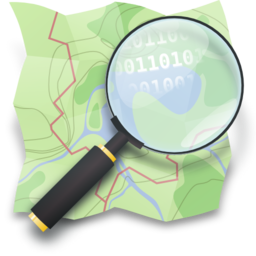
At the end of December 2023 Open Mapping Hub- Asia Pacific hosted a program call to all active contributors to embark on a journey with AP-Hub of fellowship of active mapping and community engagement with AP-Hub network and OSM community. I passed the exam with joyous remarks. I was selected for Mapping track out of 15 been selected for the Mapping Track of OM Guru Fellowship. There was 3 different track set by AP-Hub, one Mapping track (tasked for mapping), 2nd Validation Track (tasked for validation of OSM Mapping), and 3rd Training track (Tasked for training participants). On first month, we had 100 task mapping in HOT Tasking Manager. It was a rigorous mapping in Philippines, Vanuatu and Micronesia. On 2nd month, we have worked on Everydoor App POI collection. I have roamed around my neighborhood to taking detailed data of the POIs. On the 3rd month March 2024, we worked on Mapillary of 500 images. Then on 4th month April, we worked on QGIS mapping, before and after image of OSM Mapping and 100 mapping tasks in HOT Tasking Manager. On 5th month May 2024, we validated 200 tasks in HOT Tasking Manager.
The entire journey had made me a consistent mapper and having learnt many new applications to contribute to OSM Mapping, I am grateful to AP-hub for the amazing opportunity.

Hal_maps's Diary | OM Guru Fellowship Experience and the Journey Beyond
OpenStreetMap is a map of the world, created by people like you and free to use under an open license.OpenStreetMap
Greetings, fellow mappers! I am thrilled to share my journey as an Open Mapping Guru Validation Fellow. This fellowship, organized by the Open Mapping Hub Asia-Pacific, has been an enriching experience filled with learning, collaboration, and significant contributions to the OpenStreetMap (OSM) community.
My journey with OpenStreetMap began back in December 2021 during a training organized by the Geomatics Engineering Students’ Association of Nepal (GESAN). The collaborative spirit of OSM and its mission to create free, up-to-date maps for everyone instantly captivated me. Unlike other mapping services, OSM is a community-driven platform that offers unrestricted use, much like Wikipedia. Till then, I’ve started mapping my way around different parts of Nepal and have since expanded my efforts to encompass the global landscape. Over time, I became an active mapper, regularly contributing to the platform. The more I mapped, the more I realized the importance of accurate and up-to-date data, which led me to the Open Mapping Guru Fellowship. Last December, I learned about the Open Mapping Hub AP’s OMGuru Fellowship from a fellow colleague and luckly I got selected for the Validation track. It’s been an incredible journey so far, and I am thrilled to have made a significant and tangible impact on the broader OSM community.
In early 2024, I enrolled in the Guru Program of the Humanitarian OpenStreetMap Team (HOT) and learned about the OM Guru Fellowship. Intrigued by the Validation track, I applied and was fortunate to be selected. The Validation track focuses on ensuring the accuracy and reliability of map data, which is crucial for disaster response, humanitarian efforts, and other vital uses. The sense of purpose that comes from knowing my work helps create dependable maps for these causes has been deeply fulfilling.
The OM Guru Fellowship was a transformative journey. I learned to use powerful validation tools such as OSMCha, Osmose, OSM Inspector and MapRoulette. These tools helped me conduct thorough quality checks and address errors precisely. Each task presented new challenges, keeping me engaged and continuously improving my skills as a validator. One of the most rewarding aspects of the fellowship was the collaborative environment. Working alongside other passionate mappers and validators from around the world was inspiring. The guidance and support from mentors like Mikko, Dinar, and Honey were invaluable, helping me navigate challenges and grow as a mapper.
The fellowship reinforced the power of collaboration in open mapping. Every validation task and discussion highlighted the collective effort needed to create high-quality maps. It’s humbling to be part of a global network of dedicated individuals working towards the same goal—an accurate and accessible map for everyone. My most significant achievement during the fellowship was improving the reliability and trustworthiness of OpenStreetMap. Every error I corrected and every validated data point contributes to making OSM a valuable tool for communities in need. This journey has taught me the importance of attention to detail, patience, and continuous learning.
The fellowship has had a profound impact on my perspective on open mapping. The skills I gained in problem-solving and critical thinking will be invaluable as I continue my mapping journey. Moreover, the fellowship opened doors to future collaborations with OSM communities worldwide. The connections I made and the knowledge I gained will help foster a more inclusive and comprehensive mapping community.
Lastly, this Fellowship has been an incredible experience, and I am deeply grateful to the Open Mapping Hub Asia-Pacific team for this opportunity. As I continue my journey with OSM, I am committed to using my validation skills to support communities and contribute to a more resilient future for all. This is just the beginning of my story with OpenStreetMap. Happy mapping!
Tags: #OpenMapping #ValidationFellow #HumanitarianMapping #OSM #OpenMappingGuruFellowship #OpenStreetMap #HOT #OMHAP #OMGuru #OSMNepal #GESAN #YouthMappers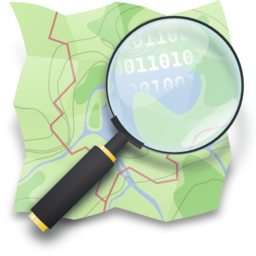
My OSM Journey From Beginner to Advanced Mapper
My journey with OpenStreetMap began back in December 2021 during a training organized by the Geomatics Engineering Students’ Association of Nepal (GESAN). The collaborative spirit of OSM and its mission to create free, up-to-date maps for everyone instantly captivated me. Unlike other mapping services, OSM is a community-driven platform that offers unrestricted use, much like Wikipedia. Till then, I’ve started mapping my way around different parts of Nepal and have since expanded my efforts to encompass the global landscape. Over time, I became an active mapper, regularly contributing to the platform. The more I mapped, the more I realized the importance of accurate and up-to-date data, which led me to the Open Mapping Guru Fellowship. Last December, I learned about the Open Mapping Hub AP’s OMGuru Fellowship from a fellow colleague and luckly I got selected for the Validation track. It’s been an incredible journey so far, and I am thrilled to have made a significant and tangible impact on the broader OSM community.
Becoming a Validation Fellow
In early 2024, I enrolled in the Guru Program of the Humanitarian OpenStreetMap Team (HOT) and learned about the OM Guru Fellowship. Intrigued by the Validation track, I applied and was fortunate to be selected. The Validation track focuses on ensuring the accuracy and reliability of map data, which is crucial for disaster response, humanitarian efforts, and other vital uses. The sense of purpose that comes from knowing my work helps create dependable maps for these causes has been deeply fulfilling.
Fellowship Experience
The OM Guru Fellowship was a transformative journey. I learned to use powerful validation tools such as OSMCha, Osmose, OSM Inspector and MapRoulette. These tools helped me conduct thorough quality checks and address errors precisely. Each task presented new challenges, keeping me engaged and continuously improving my skills as a validator. One of the most rewarding aspects of the fellowship was the collaborative environment. Working alongside other passionate mappers and validators from around the world was inspiring. The guidance and support from mentors like Mikko, Dinar, and Honey were invaluable, helping me navigate challenges and grow as a mapper.
Learnings and Achievements
The fellowship reinforced the power of collaboration in open mapping. Every validation task and discussion highlighted the collective effort needed to create high-quality maps. It’s humbling to be part of a global network of dedicated individuals working towards the same goal—an accurate and accessible map for everyone. My most significant achievement during the fellowship was improving the reliability and trustworthiness of OpenStreetMap. Every error I corrected and every validated data point contributes to making OSM a valuable tool for communities in need. This journey has taught me the importance of attention to detail, patience, and continuous learning.
Impact and Future Directions
The fellowship has had a profound impact on my perspective on open mapping. The skills I gained in problem-solving and critical thinking will be invaluable as I continue my mapping journey. Moreover, the fellowship opened doors to future collaborations with OSM communities worldwide. The connections I made and the knowledge I gained will help foster a more inclusive and comprehensive mapping community.
Lastly, this Fellowship has been an incredible experience, and I am deeply grateful to the Open Mapping Hub Asia-Pacific team for this opportunity. As I continue my journey with OSM, I am committed to using my validation skills to support communities and contribute to a more resilient future for all. This is just the beginning of my story with OpenStreetMap. Happy mapping!
Tags: #OpenMapping #ValidationFellow #HumanitarianMapping #OSM #OpenMappingGuruFellowship #OpenStreetMap #HOT #OMHAP #OMGuru #OSMNepal #GESAN #YouthMappers

Ashim Paudel's Diary | My OMGuru Fellowship Journey Under Validation Track
OpenStreetMap is a map of the world, created by people like you and free to use under an open license.OpenStreetMap
OpenStreetMap is a map of the world, created by people like you and free to use under an open license.
OpenStreetMap is a map of the world, created by people like you and free to use under an open license.
OpenStreetMap is a map of the world, created by people like you and free to use under an open license.
کلینیک ترک اعتیاد بهزیست مشهد قاسم آباد شاهد۶۶ نبش دهنوی۲۲ درمان اعتیاد
OpenStreetMap is a map of the world, created by people like you and free to use under an open license.
OpenStreetMap is a map of the world, created by people like you and free to use under an open license.
OpenStreetMap is a map of the world, created by people like you and free to use under an open license.
I have been deeply tempted to use this. There have been times when I didn’t even tag the disposal not because it slipped my mind, but because “pitlatrine” is wrong.
From the wiki for toilets:disposal=pitlatrine, “waste falls into a lined or unlined pit”. This is a lie. A pit is an unlined hole in the ground. A pit toilet uses an unlined hole in the ground. A lined hole in the ground is a vault and the difference is important to land managers and, I would argue, the end user.
As to land managers, one example would be the United States Forest Service. If an area has over a certain number of visitors a year, they try to supply a toilet facility. If that number is still few enough, a (unlined) pit toilet is sufficient. Over a certain amount, it needs to be a vault. This is due to the waste leaching into the surrounding soil with an unlined system. With sufficient volume, it’s more likely to cause contamination in the area.
When a pit toilet is full, the land manager digs a new hole, moves over whatever construction they’ve got in place to help you stay above ground while you make your deposit, and cover over the old hole. When a vault toilet is full, someone comes to pump that thing out and it stays just where it was before.
For the end user, well, the stories I could tell you about using a pit toilet. The floor of the one in Little Round Valley sagged as I stepped into it. Volunteers had just finished digging the hole and moving the little building over it at Santa Cruz Guard Station as I arrived. Practically smell free throughout the stay! Most of the rest of the backcountry pit toilets in the area don’t actually have full buildings, just 0-3 privacy walls around a topped hole. When not spacious by not having a complete set of walls, they tend to be exceedingly tight. The building of one near Blue Lakes was so tight, it was hard to stand to pull up my pants without opening the door.
I don’t have these kinds of stories about vault toilets. The horse parking one at First Water was getting pumped out when I was there. I’ve got some on how people treat vault toilets, but that’s not about just the toilet itself. They’re a much more uniform item, being a larger construction. Usually they’ve got sufficient room for a wheelchair even if it would be hard to get a chair up the step outside.
I expect there’s a few others thinking as I do. There’s 102 improved_pitlatrine and another 45 blair_ventilated_improved_pitlatrine. No one has gone for vault yet. It’s universally used by the Forest Service and Bureau of Land Management, but that doesn’t make it the UK usage. They are far outweighed by the 65362 uses of pitlatrine, but most of my own uses and some where I have not tagged would be better as vault, at least if we were using American English. (I’m not keen on improved_pitlatrine simply because it doesn’t say how. One (unlined) pit toilet I encountered was outfitted with a lid several decades old that proclaimed itself patented and capable of fitting tightly to prevent flies and smell! Improved, but not meaningfully. On the other hand, vault is very specific to the disposal.)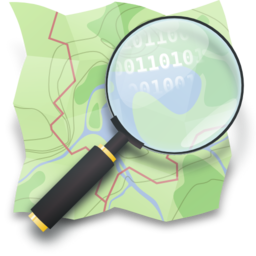
From the wiki for toilets:disposal=pitlatrine, “waste falls into a lined or unlined pit”. This is a lie. A pit is an unlined hole in the ground. A pit toilet uses an unlined hole in the ground. A lined hole in the ground is a vault and the difference is important to land managers and, I would argue, the end user.
As to land managers, one example would be the United States Forest Service. If an area has over a certain number of visitors a year, they try to supply a toilet facility. If that number is still few enough, a (unlined) pit toilet is sufficient. Over a certain amount, it needs to be a vault. This is due to the waste leaching into the surrounding soil with an unlined system. With sufficient volume, it’s more likely to cause contamination in the area.
When a pit toilet is full, the land manager digs a new hole, moves over whatever construction they’ve got in place to help you stay above ground while you make your deposit, and cover over the old hole. When a vault toilet is full, someone comes to pump that thing out and it stays just where it was before.
For the end user, well, the stories I could tell you about using a pit toilet. The floor of the one in Little Round Valley sagged as I stepped into it. Volunteers had just finished digging the hole and moving the little building over it at Santa Cruz Guard Station as I arrived. Practically smell free throughout the stay! Most of the rest of the backcountry pit toilets in the area don’t actually have full buildings, just 0-3 privacy walls around a topped hole. When not spacious by not having a complete set of walls, they tend to be exceedingly tight. The building of one near Blue Lakes was so tight, it was hard to stand to pull up my pants without opening the door.
I don’t have these kinds of stories about vault toilets. The horse parking one at First Water was getting pumped out when I was there. I’ve got some on how people treat vault toilets, but that’s not about just the toilet itself. They’re a much more uniform item, being a larger construction. Usually they’ve got sufficient room for a wheelchair even if it would be hard to get a chair up the step outside.
I expect there’s a few others thinking as I do. There’s 102 improved_pitlatrine and another 45 blair_ventilated_improved_pitlatrine. No one has gone for vault yet. It’s universally used by the Forest Service and Bureau of Land Management, but that doesn’t make it the UK usage. They are far outweighed by the 65362 uses of pitlatrine, but most of my own uses and some where I have not tagged would be better as vault, at least if we were using American English. (I’m not keen on improved_pitlatrine simply because it doesn’t say how. One (unlined) pit toilet I encountered was outfitted with a lid several decades old that proclaimed itself patented and capable of fitting tightly to prevent flies and smell! Improved, but not meaningfully. On the other hand, vault is very specific to the disposal.)

valhikes's Diary | toilets:disposal=vault
OpenStreetMap is a map of the world, created by people like you and free to use under an open license.OpenStreetMap
As a proud OSM contributor since the start of 2023, I’ve been busy mapping my way around Jalpaiguri and the North Bengal region, leaving a trail of improved data in my wake. It’s been an incredible journey so far, and I’m thrilled to have made a tangible impact on the OSM community. But, I didn’t stop there.
Last December, I learned about the Open Mapping Hub AP’s OMGuru Fellowship from a fellow OSM India member, and I just had to apply. Long story short, I got accepted, and it’s been quite great ever since.
Through the OMGuru Fellowship, I’ve had the chance to dive deeper into the world of OSM and learn about an array of tools and techniques for contributing to and improving OSM data and sharpen up my skills using JOSM. Specialising in Validation Track, I’ve honed my skills in ensuring the accuracy and quality of data – a crucial aspect of mapping that’s often overlooked. But it’s not just about validating HOT TM tasks; I’ve also acquired the skills to further map my region, add quality data, and even use it for research and analysis (cue the HOT x DataCamp Scholarship).
It’s been an incredible experience, and I’m excited to see where my newfound expertise takes me next. The OMGuru Fellowship has been a game-changer, and I’d like to extend my gratitude to HOT and APHub for the opportunity to have been a part of it, and to Mikko, Dinar and Honey for their guidance (esp. Mikko and Dinar, you guys have helped me out a lot and take on questions which I now realise were REALLY dumb :’D).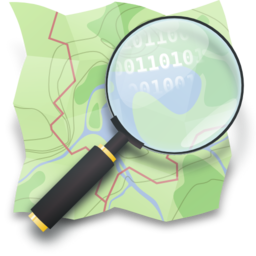
Last December, I learned about the Open Mapping Hub AP’s OMGuru Fellowship from a fellow OSM India member, and I just had to apply. Long story short, I got accepted, and it’s been quite great ever since.
Through the OMGuru Fellowship, I’ve had the chance to dive deeper into the world of OSM and learn about an array of tools and techniques for contributing to and improving OSM data and sharpen up my skills using JOSM. Specialising in Validation Track, I’ve honed my skills in ensuring the accuracy and quality of data – a crucial aspect of mapping that’s often overlooked. But it’s not just about validating HOT TM tasks; I’ve also acquired the skills to further map my region, add quality data, and even use it for research and analysis (cue the HOT x DataCamp Scholarship).
It’s been an incredible experience, and I’m excited to see where my newfound expertise takes me next. The OMGuru Fellowship has been a game-changer, and I’d like to extend my gratitude to HOT and APHub for the opportunity to have been a part of it, and to Mikko, Dinar and Honey for their guidance (esp. Mikko and Dinar, you guys have helped me out a lot and take on questions which I now realise were REALLY dumb :’D).

NLBRT's Diary | My experience w/ OMGuru Fellowship
OpenStreetMap is a map of the world, created by people like you and free to use under an open license.OpenStreetMap
OpenStreetMap is a map of the world, created by people like you and free to use under an open license.
OpenStreetMap is a map of the world, created by people like you and free to use under an open license.
Niruta Neeupane's Diary | Closing Images for Open Mapping Fellowship
OpenStreetMap is a map of the world, created by people like you and free to use under an open license.
OpenStreetMap is a map of the world, created by people like you and free to use under an open license.
OpenStreetMap is a map of the world, created by people like you and free to use under an open license.
OpenStreetMap is a map of the world, created by people like you and free to use under an open license.
OpenStreetMap is a map of the world, created by people like you and free to use under an open license.
